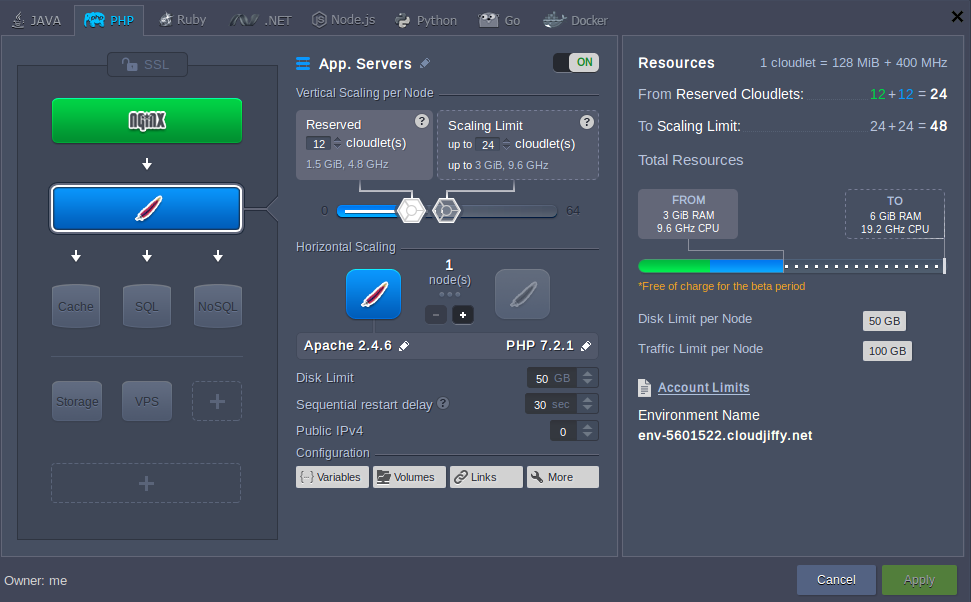Caching in NGINX is the process of storing data in front of web servers. For example, the files a user automatically requests by looking at a web-page can be stored in your NGINX cache directory. When a user returns to a page he’s recently looked at, the browser can get those files from the NGINX cache directory rather than the original server, saving time and traffic.
So caching improves performance while accessing to a resource in two ways:
- Reduces the access time to the resource by copying it closer to the user.
- Increases the resource building speed by reducing the number of accesses.
For example, instead of building the homepage of your blog at each request, you can store it in a cache.
Below instruction shows how to set up a caсhe on the NGINX-balancer in the CloudJiffy cloud.
With NGINX-balancer you can use caching for reducing application servers load. To perform that just come through the below steps:
1. Log into the CloudJiffy Manager.
2. Ask CloudJiffy to create the environment.
3.Create the environment with a few application servers and NGINX as a balancer, specify the cloudlet limits, type the name of the environment and click Create button.

https://cloudjiffy.com/portal/images/request handling/caching/creat env1.png
In a minute your environment will be created and appears in the environment list.
4.For setting up the cache click Config button for NGINX node in my environment and navigate to conf.d > cache.conf.

5.For enabling cache uncomment lines as it is shown in the picture below.

- proxy_cache_path /var/lib/nginx/cache [levels=levels] keys_zone=name:size
- This directive sets path and other parameters of a cache.
- The levels parameter defines hierarchy levels of a cache.
- The keys_zone parameter configure name and RAM size of the zone (for example jelastic:32m).
- proxy_cache zone | off, where zone - identifier of the cache.
- This directive defines a shared memory zone used for caching. The same zone can be used in several places. The off parameter disables caching inherited from the previous configuration level.
- proxy_temp_path /var/lib/nginx/tmp [level1 [level2 [level3]]]
- This defines a directory for storing temporary files with data received from proxied servers. Up to three-level subdirectory hierarchy can be used underneath the specified directory.
- proxy_cache_valid {number}m
- It specify the time during which the NGINX should keep cash. For example 720m.
That's All!